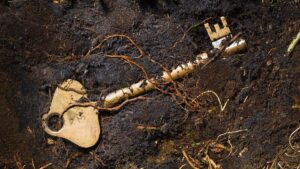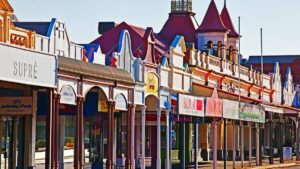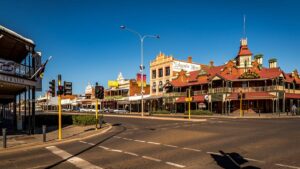School of Hard Rocks: How ASX gold giant Northern Star fostered the next generation of mining leaders
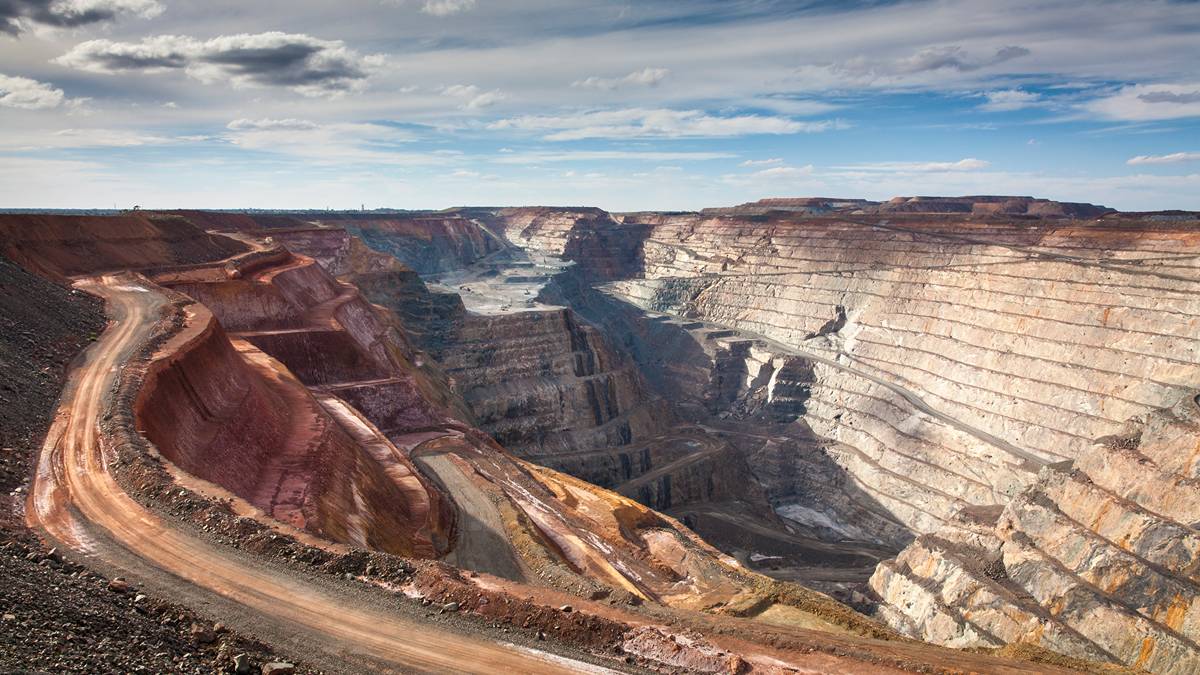
Northern Star, the owner of Kalgoorlie's Super Pit, has produced mining bosses running companies worth billions. Pic: Getty Images
- Successful mining leaders are made, not born, and a number have passed through the doors of Northern Star Resources
- Lieutenants and proteges of Northern Star and Saracen bosses Bill Beament, Raleigh Finlayson and Stuart Tonkin now dot the list of ASX company heads
- Some have already proved success stories, like Spartan’s Simon Lawson and Ora Banda Mining’s Luke Creagh
In 2014, Adam Oehlman was a garbageman working the streets of Subiaco, a leafy council in Perth’s wealthy western suburbs, as tumbling commodity prices ushered in the dying days of a historic mining boom.
It was a town on the precipice. The decrepit Subiaco Oval was on its last legs. The construction of the monolithic Optus Stadium on the Swan River would soon take Aussie Rules football elsewhere and with it the suburb’s joie de vivre.
Mining companies struggling to raise capital were shutting up shop, as for lease signs bloomed along Hay Street’s federation gothic edifices.
A geologist in training with grades he describes as unimpressive, Oehlman was hoping to find work anywhere he could take it.
“The whole goal was just I did this three year degree, and I just wanted to be paid more than a garbageman,” Oehlman joked.
Today, Oehlman is around nine months into his first role at the head of an ASX-listed explorer, inking a ~200% gain since taking charge of $20 million capped Cote d’Ivoire junior African Gold (ASX:A1G).
One of his first industry roles came on the ground floor of Northern Star Resources (ASX:NST) at its Paulsens mine in the Pilbara, where Oehlman’s entry interview brought him face-to-face with a physically – and now figuratively – towering mining figure in Darren Stralow.
While the rest of the mining industry was cutting back and sending staff to the breadline, falling gold prices and bottom of the barrel market sentiment were viewed as an opportunity by companies like Northern Star and the fellow gold upstart with which it later merged, Saracen Mineral Holdings.
It was that entrepreneurial environment Oehlman walked into a decade ago when the gold miner’s shares traded around $1. They’re now worth over $21, making NST Australia’s largest gold producer at a market cap of more than $24 billion.
“I worked as a garbageman, so I was like full time work, full time study, played footy, competing with people with the highest grades,” he said.
“They were like ‘you’ll be fine just do the job, you’re a worker’.
“Everyone was practical and commercial, it’s more focussed on results and taking those risks. You’re not there just to get a paycheck, you were there to grow something. Everyone was a shareholder.
“It wasn’t an environment where everyone’s there for the money. It was more about being a part of something.”
The School of Hard Rocks
Like Western Mining Corporation, BHP and Rio Tinto in days gone by, Northern Star is now viewed as a major incubator of C-suite talent for the junior mining sector and involvement in one of Australian mining’s greatest success stories – all time gain of over 10,000% – is a serious green flag for recruiters and investors.
Oehlman is just the latest to roll off the production line.
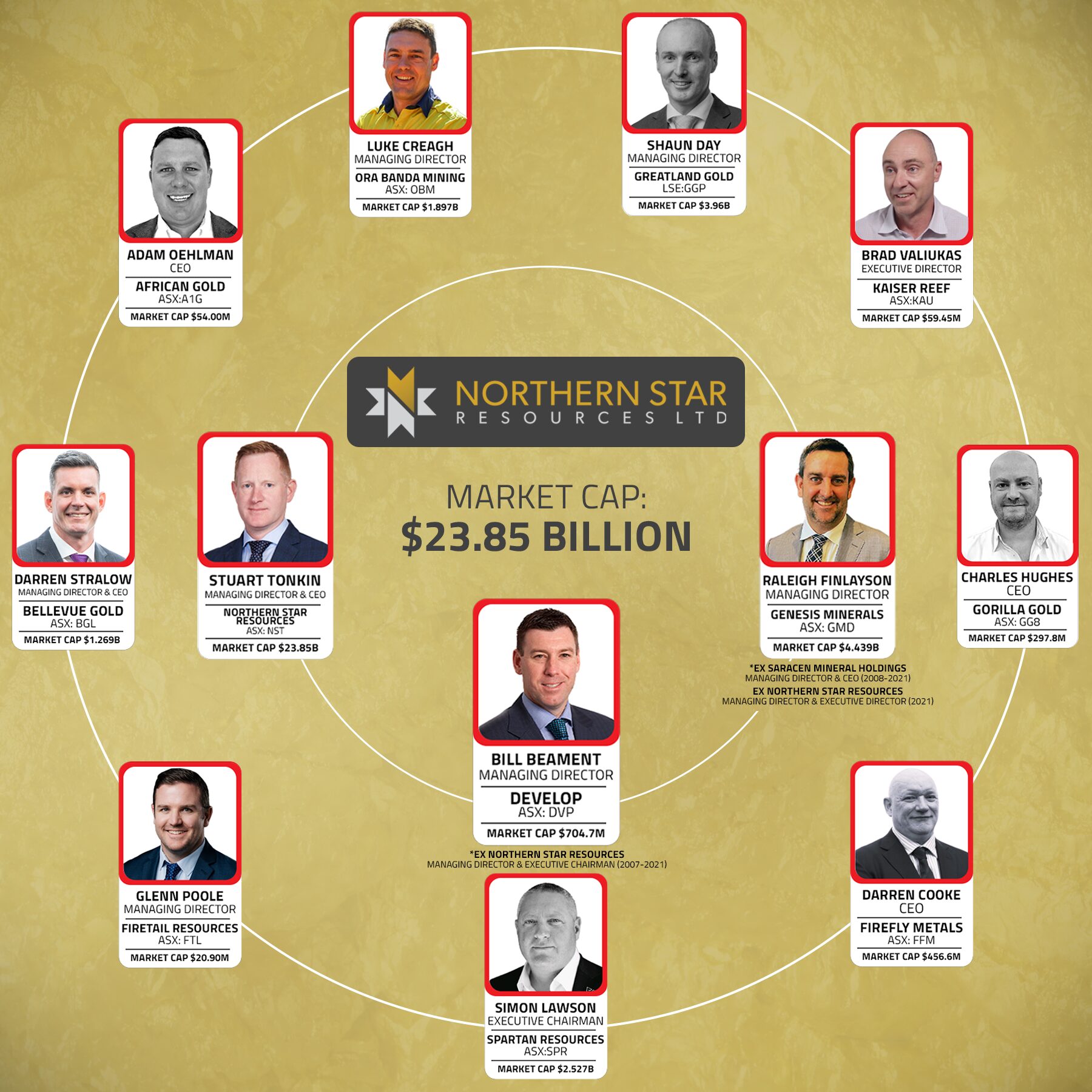
The ASX’s recent gold success stories Spartan Resources (ASX:SPR) and Ora Banda (ASX:OBM) are led by former NST geo Simon Lawson and mining engineer and COO Luke Creagh respectively.
They’re worth $2.5bn and $1.9bn respectively, clocking 1500% and 3400% gains since Lawson and Creagh’s respective appointments.
The aforementioned Stralow went on to become chief development officer at Northern Star, part of the team that engineered its 2020 merger with Saracen, a move which consolidated Kalgoorlie’s 70Moz Golden Mile under one owner for the first time.
He now leads $1.1bn capped Bellevue Gold (ASX:BGL) which until recently also housed former NST Kalgoorlie Ops general manager Bill Stirling as COO and sustainability chief Luke Gleeson.
Throw in copper explorers FireFly Metals (ASX:FFM) with its CEO Darren Cooke and Firetail Resources (ASX:FTL) and its MD Glenn Poole, Oehlman at African Gold, Shaun Day at the helm of new Telfer gold mine owner Greatland Gold (LSE:GGP), former Saracen boss Raleigh Finlayson and his team of familiar faces at Leonora gold miner Genesis Minerals (ASX:GMD) and legendary Northern Star supremo Bill Beament at mining services and copper companyDevelop Global (ASX:DVP) and … actually you’re not even finished.
Further down the list of ASX small caps you can find former Saracen and NST geologist Charles Hughes in the CEO’s seat at Gorilla Gold Mines (ASX:GG8). Until recently, early NST exploration manager Jason Boladeras led Mid West gold explorer Westar Resources (ASX:WSR).
Up to November last year Brad Valiukas, a former manager of technical services at Northern Star, had spent close to five years at Sandstone region gold driller Aurumin (ASX:AUN). He’s no longer there but remains executive director at Victorian gold miner Kaiser Reef (ASX:KAU), which recently bought the Henty gold mine from Catalyst Metals (ASX:CYL).
All up these companies share a collective market cap of ~$15.5 billion. That’s on top of Northern Star itself, which under current MD Stuart Tonkin has become a $24bn company in the midst of an all-time gold boom and just sewed up the acquisition of the next major WA gold mine Hemi in a $5bn scrip takeover of De Grey Mining (ASX:DEG).
“My proudest thing is the talent pool that Northern Star created,” Bill Beament told Stockhead.
“I don’t get into legacies or anything like that, mate, but Northern Star is not my proudest achievement, my proudest achievement is actually the people that went through there and what they’ve gone on and done.”
Success stories
Spartan Resources boss Simon Lawson said Beament was “one of those people that can make pretty impossible stuff happen”.
His intro to Northern Star came as the company made its fateful acquisition of the Paulsens gold mine in 2010 from Intrepid Mines – a $40 million deal conducted by an explorer with a market cap of around $10m.
The Pilbara gold mine had just months to run, but Beament knew the orebody well from his time at contractor Barminco.
Stockpiles outperformed, generating early cash flow, and Lawson was among the crew of geos given the keys to the car when it came to drilling for extensions.
“Bill, to his credit, before I arrived or just as I arrived, was finishing off a hanging wall drill drive, which is a piece of infrastructure that costs money to get done, but it gives you the ability to look in front of yourself,” he said.
“When you’re mining underground it’s generally high grade, you’re only sort of six months in front of yourself because you’re constantly trying to drill what’s further down plunge as you’re mining in the plane of the ore.
“It’s very difficult to drill in the plane of the ore, so you have to get offset and that costs money. And I had the belief that if we got that offset, we’d be able to drill from there and potentially find an extension to the main ore system. And that’s exactly what happened.”
There were similar stories as the gold miner expanded, making the best of a gold price collapse to take the underperforming Jundee, Plutonic, Kanowna Belle and Kundana mines off the hands of global giants Newmont and Barrick.
That growth culminated in a deal to acquire half of the Super Pit and then, through a merger with JV partner Saracen (run by Beament’s WA School of Mines colleague Raleigh Finlayson), become the first company to consolidate Kalgoorlie’s Golden Mile under one owner – transforming NST into a $20 billion company.
But the value created by its alumni has stretched further. Lawson eventually left NST when it sold the Plutonic gold mine to Canada’s Superior Gold, helping lead the exploration campaign that kept the low grade operation alive and kicking.
He took up a role as MD of Firefly Resources, then the struggling Gascoyne Resources after coming out on top in an M&A contest with the more established Westgold Resources (ASX:WGX).
Renamed Spartan, Lawson’s drill first approach led to the discovery of the Never Never and Pepper gold deposits just a stone’s throw from the Dalgaranga processing plant, which had effectively gone broke twice processing low grade ore.
Drilled out after a company-saving $50m recapitalisation, the 2.3Moz at over 9g/t found across Never Never and Pepper became the catalysts for a $2.4bn takeover from Ramelius Resources, with SPR holders to take a 39.5% share of the combined – eventually 500,000ozpa – company.
“Luckily we had some people from a very technical private equity firm Tembo Capital, they backed us, cornerstoned that recapitalisation at 10c and we came out of that and our plan was to drill like crazy,” he said.
“It was to take the opportunity of that discovery we’d found, we’d de-risked the business and the balance sheet by turning off that mill.
Unfortunately, that had become a cost and a liability that we couldn’t support.
“And then we were able to take that shareholder driven cash that we’d we got through that recap and turn that into if you accelerate time, it’s now almost 3Moz at 5.6g/t and our share price has gone up 1400% since then.”
While they have their own quirks, Lawson sees the Spartan story as an analogue of the early days of Northern Star, with both ignoring conventional wisdom to turn around mines seemingly on their last legs.
“All we did was put pressure on good geology with drill holes and that can be applied anywhere.”
Fire in the tail
Lawson is also on the board of Canadian and Peruvian copper explorer Firetail Resources, which counts Glenn Poole, a fellow alum from the early days of Northern Star, as its MD.
One of the smallest capped stocks on the list at $19m, Firetail has nonetheless drawn serious interest, gaining inclusion in BHP’s xplor program this year for its Picha project.
Northern Star itself was worth in the order of $56m when Poole arrived at Paulsens from a global behemoth in Barrick, then the owner of the Lawlers gold mine.
He said the biggest change was the speed of execution.
“If you had an idea and you worked it up, you could get the drill rig drilling that target within a week of presenting it to the geology manager,” he recalled.
Poole counts his first big success at Paulsens at the Titan discovery, which delivered 6.9m at 24.7g/t across the other side of the Jupiter Fault, just 100m from the existing mine development.
He valued the freedom geologists were given to test, and often fail with, their theories.
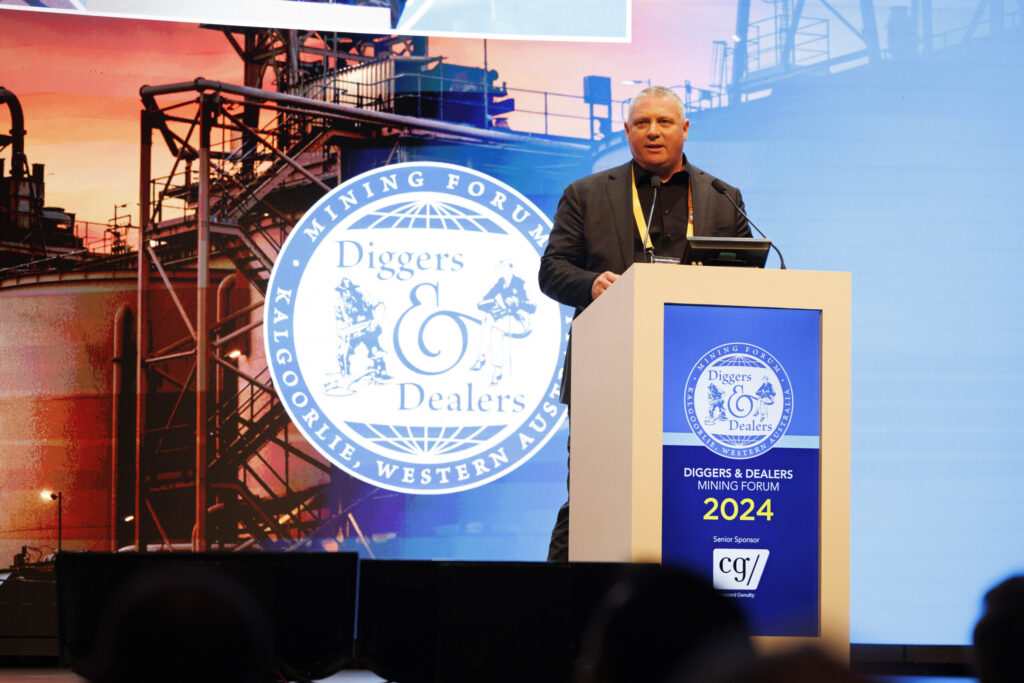
“Letting the geos have these ideas and then letting them test them and understanding that not everyone is going to come off,” he said.
“It’s not engineering where it’s binary outcome and it either passed or failed. It is a loose science the old geology.”
Flash in the pan
Was Northern Star just a flash in the pan? Or is it something that could be replicated.
Beament thinks it absolutely can be.
“It always can. I followed the playbook and sort of business model of (Normandy Mining boss) Robert Champion De Crespigny,” he said.
“I worked at a couple of his sites early in my career and I wasn’t obviously aware then, but did my research and study and worked with a number of people in that organisation and I love what he did.”
“That’s one of the key things that we did on the M&A front was … always buy a better asset next time.”
That may be a question on the mind of Ora Banda Mining’s Luke Creagh, who has turned the owner of the Davyhurst gold mine – a chronically underperforming operation – from a 3c penny dreadful into a $1.03 a share producer valued at $1.9bn.
Beament thinks Creagh’s performance at OBM is the “best of everyone by far”.
“He’s seen the potential in the geology and the orebodies, converting it from an open pit operation to an underground operation,” he said.
“He can execute sleeping in his bed that guy.
“We put a lot of effort into geology being our number one gateway and making sure our management, which quite often was a mining engineer, understood the importance of geology.”
Looking, similarly, to unlock the potential of underground deposits in WA’s Goldfields is Gorilla Gold Mines.
Its CEO Charles Hughes spent close to three years as a senior exploration geo at Saracen, moving to Bellevue Gold and then Delta Lithium after a brief spell at NST following the Super Pit merger.
“What did I take away from that? It was the way of dealing with problems, the way of setting up your business for success, how to communicate what you’re doing and why you’re doing it and how much it’s going to cost and all of these wonderful things in a very supportive environment,” he said.
“And that’s what I’m trying to bring to every other company that I go and work with, work for and lead.”
At a smaller scale, Gorilla has borrowed some of the Northern Star and Saracen playbook, with its purchase of the Vivien gold mine from Ramelius Resources showing echoes of the strategies NST and SAR employed in their Jundee, Kundana and Thunderbox acquisitions.
“The regional exploration did not get done at Vivien because they just couldn’t warrant it, they couldn’t justify it,” Hughes said.
“And that’s the big difference with us. We saw that as an opportunity and we looked at the whole project, it’s produced 350,000oz, and when we looked at it, we thought, well what is the chance of repeating these kinds of orebodies along that arc of strike?”
A maiden resource estimate under Gorilla’s ownership clocked in at 2.1Mt at a grade of 4.1g/t for 278,000oz.

The M&A DNA
In terms of bold M&A it’s hard to look past London-listed Greatland Gold and its US$475 million deal to procure the Telfer gold mine in WA off wantaway mining giant Newmont.
Greatland, backed by Andrew Forrest’s Wyloo Metals, was already in the game via its 30% minority stake in Havieron, the underground mine which will be the future of the Telfer operation.
But it’s already added ounces to the project, arguably underinvested when it sat on the books of the distracted gold majors Newcrest and Newmont.
An ASX listing looms this half, bringing former Northern Star CFO Shaun Day back to the local market at the helm of Greatland. It’s not hard to see parallels to the early days at NST, albeit with a substantially larger first asset.
“Northern Star is really the sum of the parts of six acquisitions off global majors to create Australia’s largest gold company,” Day told Stockhead.
“We haven’t earned the right yet to necessarily compare ourselves to Northern Star, which has phenomenal success, but equally to some extent this is the Northern Star playbook in its purest form.
“Being able to buy off a major, being able to reinvest at the site in terms of productivity and in the drill bit to improve performance, extend mine life and create shareholder value.
“I don’t think Bill would mind me saying … but the platform we start with is even better than Paulsens, which was a tremendous starting asset for Northern Star.”
Since moving into Telfer, Greatland has tripled the rig count from two to six and this month posted a maiden reserve under its ownership of 712,000oz gold with 23,000t copper.
That will take production out to FY27, an additional 18 months, bridging the gap to the development of Havieron.
Beament described Greatland’s acquisition as “one of the best deals in the last three or four years”.
“He’s got hold of the tiger’s tail with that asset,” Beament said.
At Stockhead, we tell it like it is. While Ora Banda Mining, Spartan Resources and Firetail Resources are Stockhead advertisers, they did not sponsor this article.
Related Topics

UNLOCK INSIGHTS
Discover the untold stories of emerging ASX stocks.
Daily news and expert analysis, it's free to subscribe.
By proceeding, you confirm you understand that we handle personal information in accordance with our Privacy Policy.
